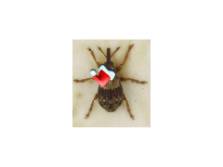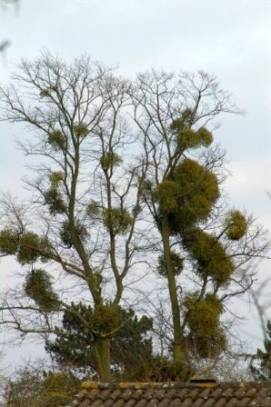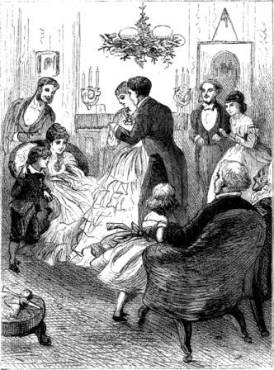Merry Christmas Beetlers and buggers!
It comes as an obvious choice for a Christmas blog to write about Mistletoe (Viscum album L.)!
Christmas – that wonderful time of year where we are fortunate to have the opportunity to gather with our loved ones, cook the goose and burn the plum pudding, have a fight with our loved ones, and then leave! However, what of those all alone? Surely a sprig of Mistletoe engenders a ray of hope for a chaste kiss over Christmas? Or, for those already attached… a ‘kiss me slow’?
Mistletoe infested tree This year's Coleoptera Christmas party; about to get busy under the mistletoe...
Cambridgeshire
Image courtesy of Orangedog 2009
Ixapion variegatum lives on Mistletoe and is affectionately called the ’kiss me slow’ weevil. This (currently) rare little beetle was first discovered in Herefordshire in 2001, ref: Foster, A.P., Morris, M.G., & Whitehead, P.F., (2001). Ixapion variegatum (Wencker, 1864) (Col. Apionidae) new to the British Isles with observations on its European and conservation status. Entomologist’s Monthly Magazine, 137: 95 – 105. Though it appears as a recent discovery, with no previous British records, Foster et al suggest that it is probably long - established, just simply overlooked by collecting efforts.
Ixapion variegatum collected by Mike Morris from Herefordshire in 2000
Image courtesy of Tristan Bantock 2011
Mistletoe is generally found in old orchards, themselves a rare and threatened habitat and this magnificently historic and parasitic plant supports a range of other insects in addition to I. variegatum. These include several true bugs (Hemiptera) of which the striking green and red Pinalitus viscicola is usually the commonest. Since all these species are entirely dependent on mistletoe, it is therefore essential that this plant be conserved, along with the habitats that support it.
A festive red and green Pinalitus viscicola
Image courtesy of Tristan Bantock 2011
I. variegatum has since been found in many other localities such as Worcestershire and Gloucestershire, and isn’t too hard to identify once you know what you are looking for!
It has a Western European range and is constantly found in very low population densities. It appears to thrive on mistletoe that is under stress on old trees reaching the end of their life. The adults are usually to be found in summer through to autumn, and possibly they can overwinter as adults (it would be a shame to miss out on all that kissing!).
The eggs hatch in April and the larvae can be found in the stems of the mistletoe until they mature in the summer, when the adults mate.
A note on Mistletoe
Most of the mistletoe harvested for the Christmas season comes from the orchards of Gloucestershire, Worcestershire, Somerset and Herefordshire, in effect Cider country! However these orchards, especially ancient orchards which support a diverse and fragile fauna are seriously under threat. The National Trust has an ongoing campaign to conserve our mistletoe and encourage people to buy sustainable sourced mistletoe for that special ‘kiss me slow’! So this year, if you are hoping for a Christmas kiss, make sure it’s a sustainable one!
http://www.nationaltrust.org.uk/main/w-global/w-news/w-latest_news/w-news-campaign-launched-to-give-mistletoe-the-kiss-of-life.htm
Thanks to Tristan Bantock for images and info on the bugs; and to Lucia for the hat!






